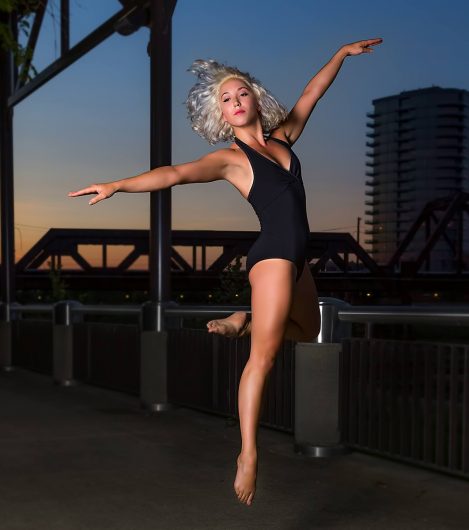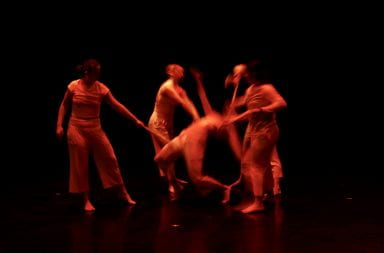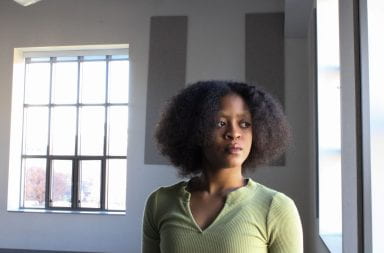
Miriam King is a professional dancer that teaches classes for people with Parkinson’s. Credit: Courtesy of Buzz Crisafulli
A dance instructor proves that dance isn’t just for fun, it can improve symptoms of neurological disorders.
Dance for PD is a national dance program that teaches specialized dance classes to people with Parkinson’s disease. The group designs classes and trains instructors, including dancer Miriam King, who is bringing the program to Columbus.
King’s involvement with Dance for PD began while she was attending Hampshire College in Massachusetts, where she created a personalized major in dance and neuroscience. King got involved in Dance for PD through her research.
After graduating in 2015, King became a Dance for PD trainer and moved to Columbus. She teamed up with Ohio State Department of Dance, and began teaching a Dance for PD class at Sullivant Hall.
King said the classes incorporate modern dance with elements of ballet and yoga.
“I’ve noticed the classes give (students) confidence to express themselves through their movement,” King said. “The classes allow for camaraderie and growth and a community that oftentimes is not available to those with Parkinson’s. They come to class and it doesn’t matter if they have Parkinson’s because everyone is pretty much in the same boat. It’s a trusting space to explore movement in a safe way.”
After beginning her classes, King met Deb Kegelmeyer, an OSU professor of Clinical Health and Rehabilitation Science. Kegelmeyer has been part of a study that researched Dance Dance Revolution improving balance in those with Huntington’s disease. Kegelmeyer said the game’s effects are similar to Dance for PD’s in that both help minimize tremors.
To further explore the effects of dance, Kegelmeyer helped develop a research study based on King’s work. The study will develop classes to observe dance’s effects on other disorders, including dementia and Huntington’s Disease.
Kegelmeyer noted the similarity between physical therapy and the movement in King’s classes. She said King’s classes tend to be more creative, encouraging people to come up with their own ideas.
“People with neurological problems have trouble learning sequences, which dances are,” Kegelmeyer said. “Miriam does a good job starting with an easy one- or two-step sequence and then building on that.”
King said she hopes to expand the classes in the central Ohio. She has begun training dance instructors for the program, emphasizing patience and thorough explanation with students.
In addition to studying other disorders, King said she wants to incorporate other styles of dance in the study. She has begun to add tango and salsa steps and started working with a dancing instructor to develop a ballroom dancing class for those who have Parkinson’s disease.
“My goal is not only to keep class varied in styles of dance but make the class an opportunity to collaborate with local musicians and dancers,” she said. “I want to help grow the Columbus dance community to be inclusive to people of all abilities and socio-economic backgrounds, creating environments where a community can be established.”
King said people are often intimidated by dance, or simply don’t have access to it, financially or otherwise. She said she hopes to make it more accessible. King continues to perform professionally and is currently performing in the Shadowbox Live show “Broken Whispers.”
King said she has plans to get her Master of Fine Arts in Dance at OSU and do collaborative research in science and arts for the department. She also plans to minor in nonprofit business studies and to one day start a nonprofit that explores movement to improve symptoms of neurodegenerative disorders.
King’s Dance for PD class is taught at Sullivant Hall on Mondays at 1:30 p.m. The classes are free and open to the public.
Correction Oct. 31: A previous version of this article incorrectly identified the disease the Dance Dance Revolution study benefitted. A correction was also made to clarify King’s involvement with Dance for PD.


